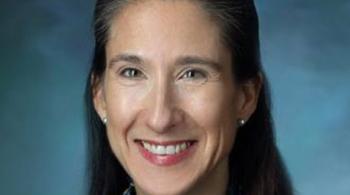March 22, 2016
Autism is called a spectrum disorder because it can present in many different ways; no two students with autism spectrum disorder (ASD) are exactly alike. For this reason, students with ASD are offered a variety of learning environments to best fit their needs. In order to elaborate a bit more on what it means to teach in a self-contained classroom for students with ASD (versus supporting students with ASD in the inclusion setting), Lisa Carey, M.A. (LC)interviewed Center for Innovation and Leadership in Special Education (CILSE) fellows, Anne Marie Tagliaferri, M.Ed. (AMT) and Rachel Eversole, M.A. (RE) about their personal teaching experiences.
LC: Can you give us a brief description of your experiences as teachers of students with ASD?
AMT: I had a very positive experience teaching students with ASD in a self-contained classroom. I taught in a K-2 classroom and classrooms for grades four through five. Each class came with its own set of challenges, but being in the self-contained classroom allowed us flexibility. The classrooms I taught in also had two paraprofessionals and support from a program specialist.
RE: I taught students with ASD at the middle school level for five years. In that time, I had students that were included in general education for specials such as art and music, students that had some of their content classes in general education, and students that were fully included and only came to me to check in. Students included in general education classes did so in a co-taught environment where a special educator and general educator team supported the students. Students that were in all general education classes typically started and ended their days with me so that I could make sure they had the materials and assignments they needed for their school day and evening at home.
LC: Given the different educational settings you just described, what are some common misconceptions people have about either self-contained classrooms or inclusion classrooms?
AMT: As I mentioned, I taught in a self-contained classroom specifically designed for students with autism spectrum disorders; the students had academic and behavioral needs that required intensive supports. The most common misconception about self-contained classrooms is that the students never have access to their peers in general education. One of the schools I taught in had an excellent Best Buddies program. The students in the Best Buddies program spent their recess in my classroom, where we would do group or peer activities. It was a great opportunity for all of the students to be together in a small, supported environment.
RE: Some common misconceptions about the inclusion setting educational setting are:
- Only the special education teacher is responsible for the actions of and outcomes for the student with special needs
- The special education teacher is not responsible for instructing students without IEPs [Individualized Education Program]
- Students with ASD will not be able to participate well in the social interactions of group assignments or small group instruction
- If a student is in this setting, it is the only place they can receive services
LC: What are some benefits of the educational settings that you taught in?
AMT: There are many benefits to self-contained classrooms. Primarily, you are allowed a certain amount of flexibility to adequately plan and program for students. While we followed the common curriculum, I was able to modify it greatly and make it meaningful to students at their instructional level. Because of the small staff-to-student ratio, students were able to receive intense academic and behavior supports.
RE: If collaborative planning time is given and each teacher trusts one another, working in inclusion classrooms can be a wonderful, supportive teaching opportunity. The general and special educator can learn from one another and work together to move all of their students forward. This model provides shared ownership for the learning of all students in the classroom and consequently promotes the integration of students with ASD into the school environment more efficiently.
LC: What are some drawbacks of the educational setting you taught in?
AMT: One of the drawbacks of self-contained classrooms is that the teacher has to be proactive in making sure that interaction with typical peers is ongoing and meaningful. You also have to work extra hard to ensure your students are truly part of the school community.
RE: If the wrong teaching pair is formed, the special education teacher can be put in a position where they feel like the assistant in the classroom, and not an equal to the general education teacher. This is unfortunate, and when it happens that way, it is detrimental to the learning of all students. Harnessing the strengths of both teachers in order to create a well-run classroom is optimal.
LC: If you could travel back in time to when you first started teaching students with ASD and give yourself some advice, what would it be?
AMT: I would tell my new teacher self to make the least dangerous assumption about all students. Don’t make assumptions about what students can or can’t do. This is dangerous because you are lowering expectations. Making the least dangerous assumptions means assuming they can do anything. Set high expectations, create rigorous content, and don’t forget - they are just kids!
RE: If I could go back and give myself some advice as a first year teacher of students with ASD, I would tell myself to plan thoroughly, but not be upset if the plan needs to be altered or delayed at the last minute. It’s okay to not get through everything you have planned for a day. Along those lines, I would also tell myself that it is more important to fully resolve all behavioral issues before going back to instruction. If issues are not fully resolved, they will creep back up and cause you to lose more time for instruction as you try to help the student the second, third, and fourth times.
LC: As a teacher of students with ASD, what are some classroom strategies, tools, and procedures that you couldn’t live without?
AMT: I couldn’t live without the principles of applied behavior analysis (ABA). When teaching students with autism you have to be systematic, take lots of data, and be able to analyze the data to create effective academic and behavioral interventions.
RE: Three things I couldn’t live without are high interest video content to support instruction, high quality peer models, and visual organizers for students.
LC: What was your favorite thing about teaching students with ASD?
AMT: My favorite thing about teaching students with ASD was the challenge each student presented individually. It was their enthusiasm and humor that got us through even the hardest days.
RE: My favorite thing about teaching my students was their sense of humor, their honesty, and the relationships we were able to form by working with each other for three consecutive school years. Also, my students gave me just as much, if not more, of an education than I gave them, and I am eternally grateful for that.
LC: Any closing thoughts?
RE: If you have the opportunity to work with students with ASD, do it! You will learn just as much from them as they will from you.















